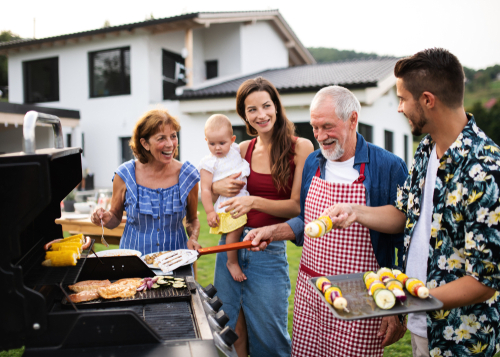Written on: March 24, 2025
 Whether you’re having your crew over for the big game and some BBQ, or you’re just grilling something for family dinner, you don’t want to run out of propane. While most portable tanks don’t come with a gauge, a good rule of thumb is that a standard 20-pound portable propane tank should get you through about 25 grilling sessions, or about 18 to 20 hours of grilling time. But who keeps track of how often and for how long they use their grill?
Whether you’re having your crew over for the big game and some BBQ, or you’re just grilling something for family dinner, you don’t want to run out of propane. While most portable tanks don’t come with a gauge, a good rule of thumb is that a standard 20-pound portable propane tank should get you through about 25 grilling sessions, or about 18 to 20 hours of grilling time. But who keeps track of how often and for how long they use their grill?
The good news is that there are easier ways to make sure you don’t run out of propane than marking it down on a calendar every time you grill.
Nobody wants to pull out a stopwatch every time they fire up the grill to keep track of propane use. But most of the portable cylinders that you’d hook up to your grill don’t have a gauge, so how do you know if your tank is running low?
Here’s three ways to make sure you never run out:
The easiest way to make sure you always have enough propane on hand to fire up the grill is to keep an extra tank on hand. Pico makes it easy to always have the propane you need for your grill with our convenient cylinder refill or exchange services.
Some people appreciate the swap-and-go convenience of a cylinder exchange. But savvy customers love the ease and the savings they get by refilling. When you own your propane grill tank and refill it, you can save money in a few ways.
First, you’ll save on the price of the propane. The difference can be up to $1.75 per gallon!
You also save because you’ll pay only for the propane you use. When you choose to refill your propane tank, you’re only buying the propane to fill the rest of your cylinder.
With propane grill tank exchange, you’re charged for all the propane in the cylinder—including the propane left in the tank when you take it to be exchanged. Because think about it: When you see your propane cylinder is starting to run low, your instinct is to take it in to exchange before you run out. So unless you run them until they’re completely empty, you could be wasting half a tank or more over the span of a few tanks.
Whether you need a cylinder refill or exchange, or you want to pick up an extra propane grill tank so you always have a spare, the Pico team is ready to assist you. Contact us for more information today.